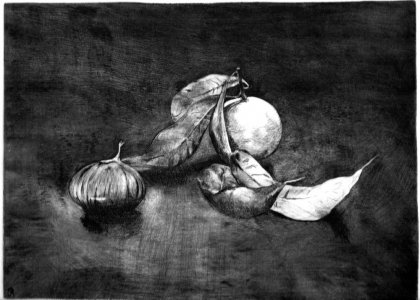Incisione - Incisioni
Puntasecca
Tecnica diretta di incisione del metallo (di preferenza il rame), per mezzo di una punta acuminata d’acciaio, che si impugna come una matita.
Nella puntasecca lo strumento “sposta” il metallo (mentre il bulino lo asporta) permettendo così di trattenere l’inchiostro, generando sul foglio, quei caratteristici aloni neri vellutati attorno ai segni. La pressione esercitata dal torchio provoca un graduale schiacciamento delle barbe, e di conseguenza la perdita di quei valori chiaroscurali peculiari di questa tecnica pertanto le buone stampe non superano generalmente (se non si acciaia la lastra ) i venti esemplari.
Nella puntasecca su plexiglas, le barbe (inconsistenti) vengono eliminate come nel bulino, permettendo così di stampare un certo numero di esemplari.
Drypoint
Direct technique of the metal etching (preferably copper), by means of a steel tip sharp, that is hold like a pencil.
The difference in the graphic outcome between the engraving by burin and by dry-point consists, in the fact that the so-called "scraps" (metal rises at the edges of the groove), are not removed as happens with the use of burin. We want to point out that in drypoint the tool "move" the metal while the burin removes it – therefore allowing to hold the ink, generating on the sheet, those characteristic velvety blacks halos around the signs.
The pressure applied by the press causes a gradual crushing of the metal scraps, and consequently the loss of those peculiar chiaroscuro features of this technique therefore the good prints generally do not exceed (if the slab is not duly treated with steeling process) twenty specimens.
In drypoint on Plexiglas, scraps (usually inconsistent) are removed as in the use of burin, allowing to print a much more considerable number of copies.
Great interpreters of drypoint were among others: the “Maestro del Libro di Casa” (second half of 1400), 1431, Andrea Mantegna, "l'Isola di Canturo" engraving intaglio with burin and drypoint, A. Dürer (1471-1528), A. Meldolla (lo Schiavone) (1520-1563), Rembrandt (1606-1669), E. Munch (1863-1944), O. Dix (1881-1969), M. Beckmann (1884-1950), E.L. Kirchner (1880-1938).













